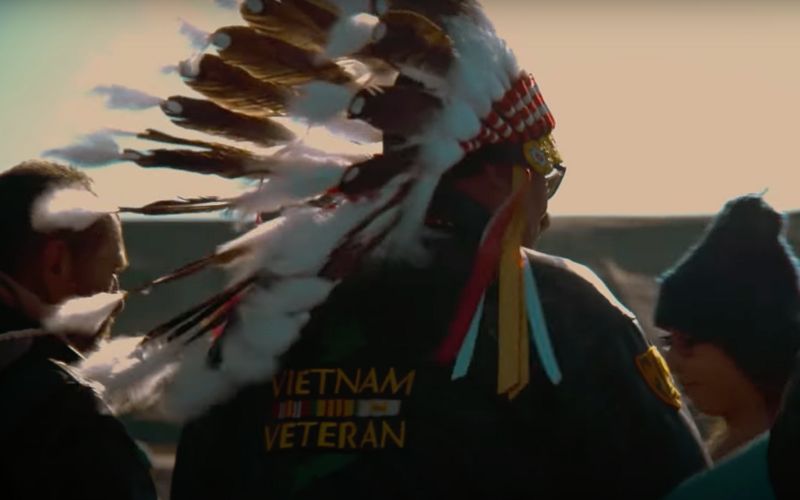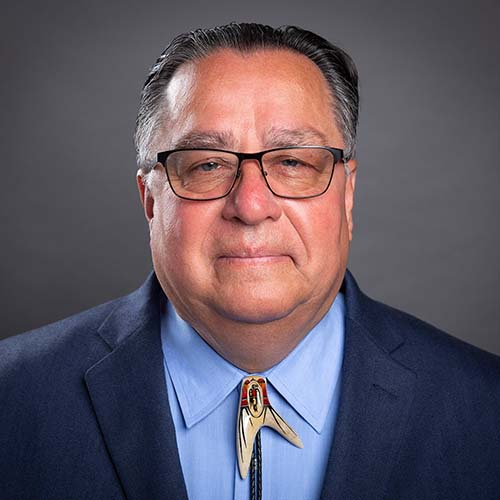
- Details
- By Cristina Johnson
Guest Opinion. Native Americans have remarkably stood on the frontlines of the US military service, answering the call to defend the nation. Their contributions span every historic battle of the past century, from World Wars I and II to conflicts in Korea, Vietnam, Afghanistan, and Iraq. Today, these indigenous people make up about 1.7% of active-duty service members despite comprising only 1.4% of the general population. Meanwhile, more than 140,000 veterans currently reside nationwide, with American Indians and Alaska Natives having served in the Armed Forces at five times the national average—the highest per-capita participation of any demographic in the military. Tragically, like many of their comrades, these individuals were also exposed to environmental contaminants, such as asbestos, burn pits, Lewisite, Agent Orange, and radiation causing a myriad of serious illnesses.
To tackle this concern, Congress ratified the Honoring Our PACT Act of 2022 to expand healthcare services and other benefits for veterans affected by toxic exposures. Yet while this landmark legislation marked a major stride, its promise is unfortunately compromised now, as the country’s Department of Veterans Affairs (VA) deals with an alarming budget cut under the present administration. Framed as a bureaucratic reorganization, this move has led to dire consequences, including a decreased workforce and even a surge of turned-down job opportunities by qualified healthcare providers. For Native American veterans—whose access to care already lags due to system disparities—such outcomes pose a direct threat to their health, survival, and the fulfillment of the long-overdue federal obligations.
Native American Veterans Deal with Toxic Exposure Risks
Military service has consistently carried the dangers of toxic exposure, affecting numerous veterans, including many Native Americans. Among the most troubling hazards is asbestos, a natural mineral previously prized for its verstility. The material has become extensively utilized in military property for much of the 20th century. However, this cheap and abundant material has concealed a lethal cost. When disturbed, asbestos releases microscopic fibers that, once inhaled, can lodge deep in the tissues covering the lungs and other internal organs, increasing the risk of developing mesothelioma, asbestosis, and lung cancer.
The risk is particularly severe within the US Navy, where personnel were stationed aboard vessels laden with asbestos. Accordingly, most ships built before the 1980s contained the mineral, meaning military sailors at this time might have spent their years of active duty surrounded by an invisible threat. And since diseases stemming from this exposure typically have a long latency period, the impact of the crisis is just beginning to emerge now.
An interactive map indicates that between 1999 and 2017, 236,981 to 277,654 Americans have already lost their battle against asbestos-related illnesses, with 12,000 to 15,000 deaths reported annually. Mesothelioma alone claims around 2,000 to 3,000 lives yearly, and several studies show that veterans account for roughly one-third of these fatalities. Apparently, a large chunk of these victims were deployed in contaminated bases such as Altus Air Force Base in Oklahoma, home to 38 federally acknowledged Indian nations, and the Army Ammunition Plant in Iowa, hosting a tribe of the Meskwaki Nation. Addressing the needs of these affected veterans requires comprehensive healthcare services, which can be effectively provided by a well-equipped and fully funded VA workforce.
The Drastic Impact of VA Cuts on Native American Veterans
Significant advancements have been made over the past several years to address the long-neglected healthcare needs of toxic-exposed veterans. For instance, since the passage of the Pact Act, more than 2.745 million former service members nationwide have already filed their compensation claims, of which more than 660,000 have already been approved. Native American veterans were among those who engaged. In fact, nearly three-quarters—or 74.3%—of service-connected American Indian and Alaska Native veterans are now utilizing VA healthcare. This participation is also expected to grow further as the country’s National Council of Urban Indian Health calls on more members of this community to start processing their claims to avail of their rightful benefits.
Yet this progress has been left in limbo as the VA faces severe budget slashes that threaten to undermine its workforce and, ultimately, the quality of care veterans receive. Adapting to these cutbacks, the agency has already downsized by 17,000 employees as of mid-2025 and expects to lose nearly 30,000 positions before the end of the fiscal year. Unfortunately, this reduction signifies remaining VA employees are likely burdened with heavier workloads as well as stretched resources, which creates stress and lowers morale across the system. More alarmingly, such financial strains have likewise contributed to a surge of declined job offers from qualified healthcare providers. Rejections by physicians were specifically four times higher than during the same period last year—a trend that exacerbates staffing shortages and further slows claims processing, delays medical appointments, and limits outreach to remote and tribal communities.
For Native veterans—many residing in remote, rural areas and reliant on a limited network of VA facilities—the stakes are critically high. This is because the federal government bears a critical trust responsibility to tribal nations, which embodies both a legal and moral duty to provide comprehensive healthcare to Native people. By disrupting the VA workforce—as a result of the significant funding reductions—this mandate is placed at great risk, alongside the progress of introduced measures like the PACT Act. Without urgent congressional intervention to restore staffing levels as well as secure sufficient funding, the promise of timely and equitable care for these brave individuals will eventually hang in the balance.
Cristina Johnson is a Navy veteran advocate for Asbestos Ships Organization, a nonprofit whose primary mission is to raise awareness and educate veterans about the dangers of asbestos exposure on Navy ships and assist them in navigating the VA claims process. For more information, please visit our page.
Help us defend tribal sovereignty.
At Native News Online, our mission is rooted in telling the stories that strengthen sovereignty and uplift Indigenous voices — not just at year’s end, but every single day.
Because of your generosity last year, we were able to keep our reporters on the ground in tribal communities, at national gatherings and in the halls of Congress — covering the issues that matter most to Indian Country: sovereignty, culture, education, health and economic opportunity.
That support sustained us through a tough year in 2025. Now, as we look to the year ahead, we need your help right now to ensure warrior journalism remains strong — reporting that defends tribal sovereignty, amplifies Native truth, and holds power accountable.
 The stakes couldn't be higher. Your support keeps Native voices heard, Native stories told and Native sovereignty defended.
The stakes couldn't be higher. Your support keeps Native voices heard, Native stories told and Native sovereignty defended.
Stand with Warrior Journalism today.
Levi Rickert (Potawatomi), Editor & Publisher
